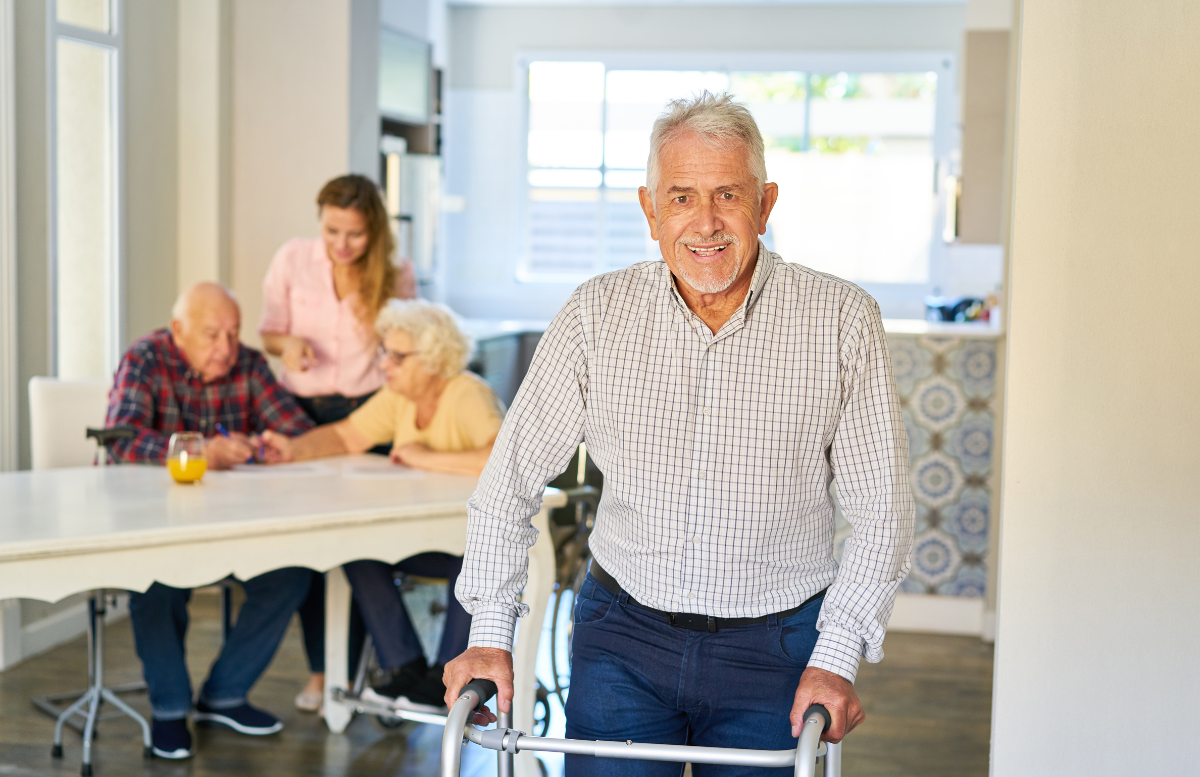
Fall Prevention Tips for Seniors
The most complex system ever constructed is the human body. The more we understand it, the more we understand just how incredible it is. Our bodies usually do an excellent job of serving us throughout life. Our bodies miraculously continue to endure everyday wear and damage and recuperate (although more slowly) from injuries and operations. Our muscle mass and balance peak in our twenties, but declines as we age. Later in life we need to be proactive in applying fall prevention strategies for seniors.
It is totally normal and anticipated for older adults to lose some strength and balance as they age. Unfortunately, this raises our chance of falling since, despite our bodies’ resilience, this lowers our equilibrium. In reality, 1 in 4 elderly people reported falling, accounting for around 36 million falls annually, with 8 million of those resulting in injuries necessitating medical attention. Furthermore, 50% of seniors who fall will probably do it again.
Prioritize Preventing Falls
The most crucial lesson from these depressing or even unsettling figures is that improving your balance and strength now will pay dividends in the long run in a number of ways. Evidence suggests that older adults who participate in structured fall prevention programs in community-living settings, especially those older adults who are in high-risk groups (those who have fallen before or who have a fear of falling), stand to gain the most and can lower the number of falls.
Here are some great recommendations from the Silverbell Homestead team of specialists to help reduce your fear of falling and improve your understanding of fall prevention for elders.
1. Preventative Measures
- Get rid of the clutter: Make sure the floor is free of anything that could cause you to stumble or fall, including furniture, electrical cords, and other items. Make sure your home’s walkways are wide enough for your assistive device if you use a walker or cane.
Make sure the lighting in your living, bathroom, and sleeping spaces is bright enough and that the on/off switches are not difficult to reach. Along the path to the restroom, you might want to think about installing nightlights.
- Roll the carpets up: It’s time to remove the area rugs, which can pose a risk of falling. You run the risk of tripping over turned-up, and frayed rug ends with your toes or mobility aids (a walker or cane).
You should be able to comfortably and slowly sit down in your favorite chair and on the toilet without “falling” onto the seat. Any chairs with wheels should be avoided since they can move while you are in the process of sitting or standing.
- Install grab bars in the bathroom: Make sure your tub or shower mat is non-slip both inside and out.
- Solid railings: Make sure that all indoor and outdoor steps have railings that are installed and that are fastened securely.
2. Reminders on Physical Fitness
Do’s for dizziness: Do you occasionally feel lightheaded when you first stand or sit up? Sit up or stand carefully until you feel stable. Do you take any medications that could make you queasy? Request a review of your prescriptions from your physician or pharmacist.
Help with hypertension, To begin with, if you take blood pressure medication, take it exactly as prescribed in order to lessen or avoid symptoms. Next, consume lots of liquids to hydrate yourself and prevent dehydration by boosting blood volume.
Strength = Movement: One of the most crucial factors in maintaining strength and preventing falls is mobility. Walk as often as you can and strengthen your muscles by lifting weights. To discover the ideal amounts for you, consult a physical or occupational therapist.
3. Take Safety Measures to Prevent Falls While Outdoors
Take a look at the temperature: Be mindful of the increasing temperatures. Even merely sitting in the sun during really hot weather can dehydrate you and throw off your balance. Keep in mind that low temperatures throughout the winter can cause conditions where you are more likely to fall, so be aware of that increased risk.
Terrain awareness: Take extra precautions and extra time (as well as your walking aid) if you must cross soft or uneven terrain.
4. Prior Planning
You know your body and habits: Make a restroom strategy if you frequently experience a sudden urge to use the facilities and find yourself rushing to the restroom. Making a plan in advance will lessen the need to hurry, and you may possibly avoid a fall.
Bring your phone along: So that you won’t have to rush to answer a call, have a phone nearby.
Talk to your family members: It’s crucial to request patience from your friends and family when they knock on your door. You don’t want to feel rushed, so ask them to give you a few additional minutes to respond.
5. Have Your Mobility Aid Ready
Even if you only need to take a few feet, keep your walking aid with you. If you’re carrying something, it’s important to have this aid.
Stop letting an imbalance impairment lower your quality of life.
You can decrease and even eliminate your risk of falling by adopting these changes to your daily routines and outdoor and indoor environments. Additionally, if you reside in an assisted living community, there is a good possibility that you have access to a physical therapy and fitness center, where you can participate in programs that can help your strength and range of motion. All of which can aid in preventing falls that might result in injuries, allowing you to preserve the greatest amount of independence.
READ NEXT: What is Aqua Therapy for Seniors?
